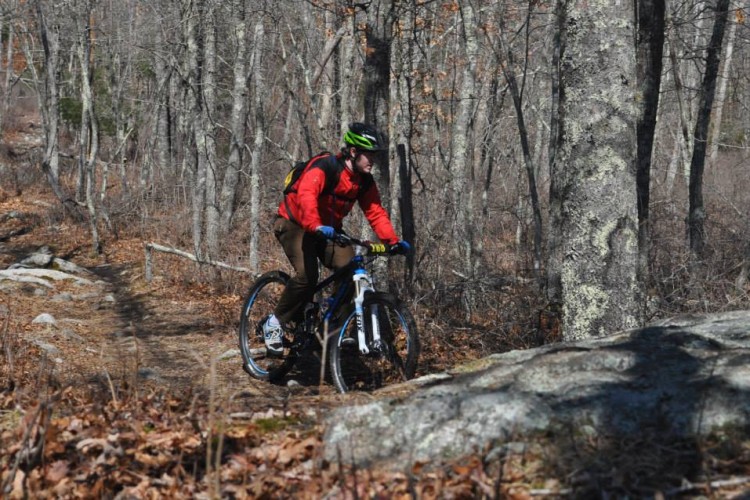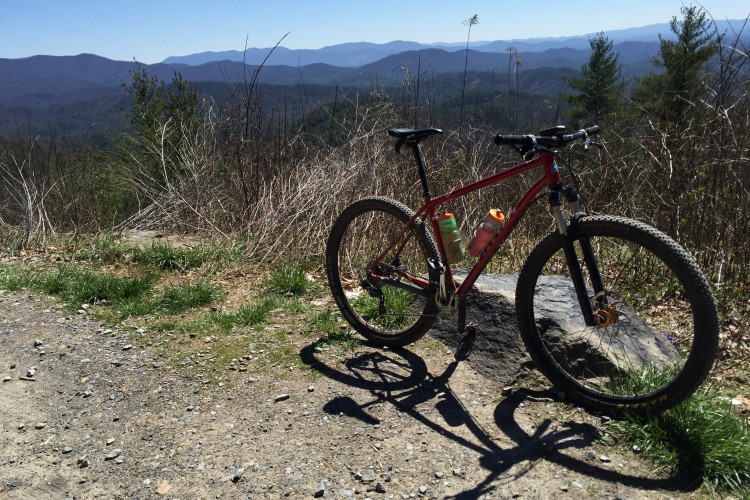We put together this infographic based on the survey we ran last month. and gained a ton of great insights! Feel free to draw your own conclusions; this information wasn’t compiled to push any particular agenda or a particular way of thinking about trails. However, I would like to offer some additional info on flow trails and volunteering that didn’t quite fit the objective data presented above.
Flow trails
Most mountain bikers don’t have a preference for machine-cut or hand-built trails, which makes sense: with so many places to ride these days, it’s really up to the rider to pick the trails they enjoy. However, if a trail were being designed by popular vote, two features stand out as “must haves”: berms and rollers. These features were by far the most popular and also the least disliked features; not only that, they’re both hallmarks of the “flow trail.” So perhaps flow trails are the most politically correct, or at the very least, the type of trail that will be appealing to the widest audience (despite the fact that few seek these trails out explicitly.)
Volunteering
We were a little surprised (disappointed?) at how little most mountain bikers give in terms of time and money to trail development and maintenance. We decided to go beyond the raw data and get a sense of how the average mountain biker trades off between giving time and money to their local trails, and found these rules of thumb.
The #1 reason people aren’t involved in a local club is reportedly because they’re too busy. So, among those who volunteered zero hours but donated money to trail advocacy, the average donation was $42. Our suggestion: if you can’t give any time this year, consider giving at least $50 to your local club.
For younger riders or those on a budget, time may be more abundant than funds. Among riders who donated $0 but volunteered at least 1 hour, the average time spent working on trails was about 5 hours.
Finally, we found that those who volunteered time at their local trails are averaging about 1 hour of volunteer trail work for every 20 hours of riding. If we all do our share based on the amount of use we get out of our local trails, we can make a big difference!
What stands out to you in the infographic above?
Download the PDF version of the infographic, suitable for printing. Want more infographics? Take the 2014 MTB Gear survey to contribute to the next one!






















16 Comments
Oct 20, 2016
Aug 11, 2014
Aug 12, 2014
Aug 14, 2014
Aug 16, 2014
Dec 27, 2014
So, Mr. Barber, here is our group question. (I dislike asking embarrassing questions that make me sound dumb all by myself.) What IS the difference?
Apr 5, 2015
Feb 19, 2015
Aug 11, 2014
Aug 11, 2014
Aug 13, 2014
If that's the case, and I assume those on ST are more knowledgable than the average rider, we're in for an uphill battle in gaining support from non-bikers for trail access.
Aug 14, 2014
Whenever I see a yield sign on the trail I imagine a meeting where a rep from all 3 trail groups (hikers, horse riders, and bikers) are meeting together to decide who gets the right away on the trail. The hiker is this gruff, older guy who looks tough as nails. The horseback rider is this half man, half horse creature (what do you call those things again?) that's super imposing. Then there's this skinny biker in his spandex kit and he's just nodding along to whatever the other guys say. How else can you explain the fact that we have to yield to everyone else and it's not a true "circle" of yielding? Even in rock, paper, scissors the paper is allowed to beat rock. :)
Aug 16, 2014
Aug 11, 2014
There are some great flow trails (such as Sandy Ridge in OR), but the great ones have a lot of wooden features, skinnies, jumps, etc; features that got low preferences.
Hopefully trail builders don't take these results too seriously.
Side note: I believe I voted for rollers, but I had tall, steep, boulder rollers in mind. Now I'm not sure if this is what most people were thinking of...
Sep 20, 2016
Aug 11, 2014
I'm totally kidding! that just cracked me up when I saw those stats. VERY COOL infographic!